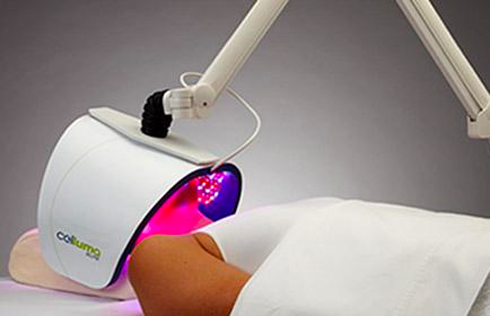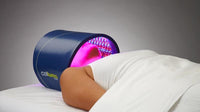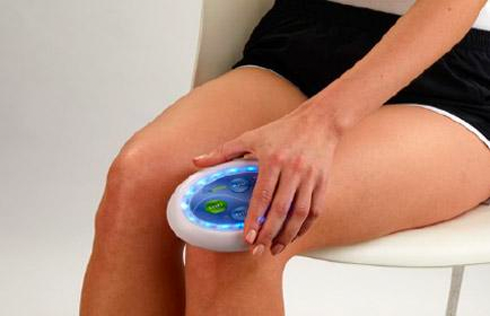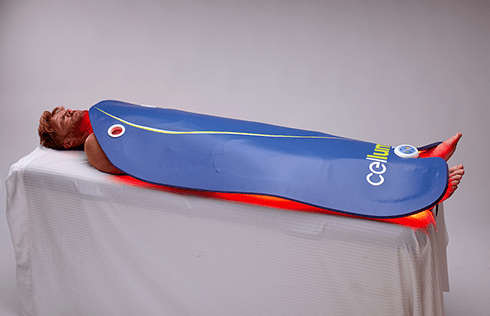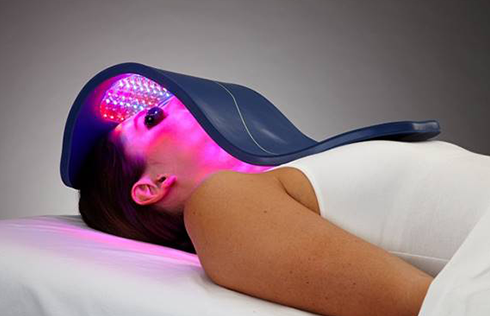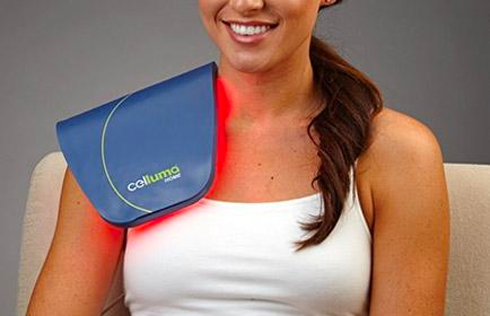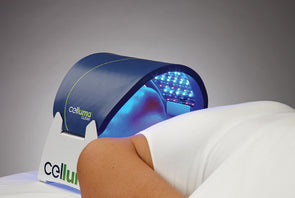Benefits of Blue LED Light Therapy Treatments

It is well known that LED Therapy using light energy in the blue light range of the electro-magnetic spectrum (400nm – 500nm) is very effective in treating mild to moderate acne vulgaris. When P.acnes bacteria is exposed to blue light energy, a photo-toxic event is created, resulting in the death of the bacteria. Specifically, LED light therapy systems utilize the mechanism of endogenous photodynamic therapy where bacterial porphyrins, which are produced as part of the normal metabolism of P. acnes, act as natural photosensitizers. When they absorb light, preferably wavelengths in the blue light and red light range, the resultant photodynamic reaction produces singlet oxygen species and reactive free radicals, which destroy the bacteria themselves. Essentially, the P. acne bacteria commit suicide.
Blue light is the wavelength of choice for treating acne as it is a short wavelength of light energy and is at the peak of the light energy absorption curve. The penetration of light energy is a function of the wavelength and the shorter the wavelength, the shallower penetrating the light energy. As P. acnes bacteria resides close to the surface of the skin and blue light is very shallow penetrating, blue light is ideal for killing P. acnes bacteria. And in the absence of P. acnes bacteria, you eliminate the fundamental source of acne vulgaris. This being the case, having a light therapy device that emits light energy in the blue range is essential for every skin care professional, as well as those home users looking to eliminate their acne issues.
Today, LED light therapy devices that have robust regulatory credentials (FDA, CE, TGA) for treating acne emit blue light in the range of 415nm to 465nm. The first generation of LED device that came to market 15 – 20 years ago used 415nm blue light energy because this wavelength was very well known in the photo-activation of topically applied products like Levulan Kerastick. This 415nm wavelength is also at the peak of the light energy absorption curve, making it very predictable and effective in triggering photo-sensitive substances.
However, shorter wavelengths in the blue range of light energy, closer to the ultra-violet range, and specifically 415nm, have been shown in clinical studies to increase the likelihood of triggering hyperpigmentation. The fundamental mechanism of action seems to be that light energy directly targets melanocytes in the skin to stimulate melanogenesis pathways. On these rare occasions, the darker the skin the more severe and the more long-lasting the hyperpigmentation, particularly with Fitzpatrick Type III and IV skin types. Nevertheless, the hyperpigmentation is transient and typically resolves in 2 weeks to 2 months.
Similar to the depth of penetration, the longer the wavelength of light energy, the less severe and shorter lasting the hyperpigmentation. Clinical studies indicate that the possible triggering of hyperpigmentation decreases rapidly in wavelengths longer than 465nm. Accordingly, skin care professionals and their clients/patients may be better served by the use of LED devices that emit blue light energy closer to 465nm, which is clinically proven to be both effective in treating acne vulgaris, but less likely to trigger hyperpigmentation.
More importantly, the amount energy available for absorption seems to be the key factor in triggering hyperpigmentation and other skin damage. The biphasic dose response curve in low-level light therapy teaches us that desirable cellular activation takes place when 2 – 10 joules per centimeter squared of light energy is available for absorption. Above 10 joules per centimeter squared, too much energy is being delivered, potentially triggering undesirable oxidative events.



